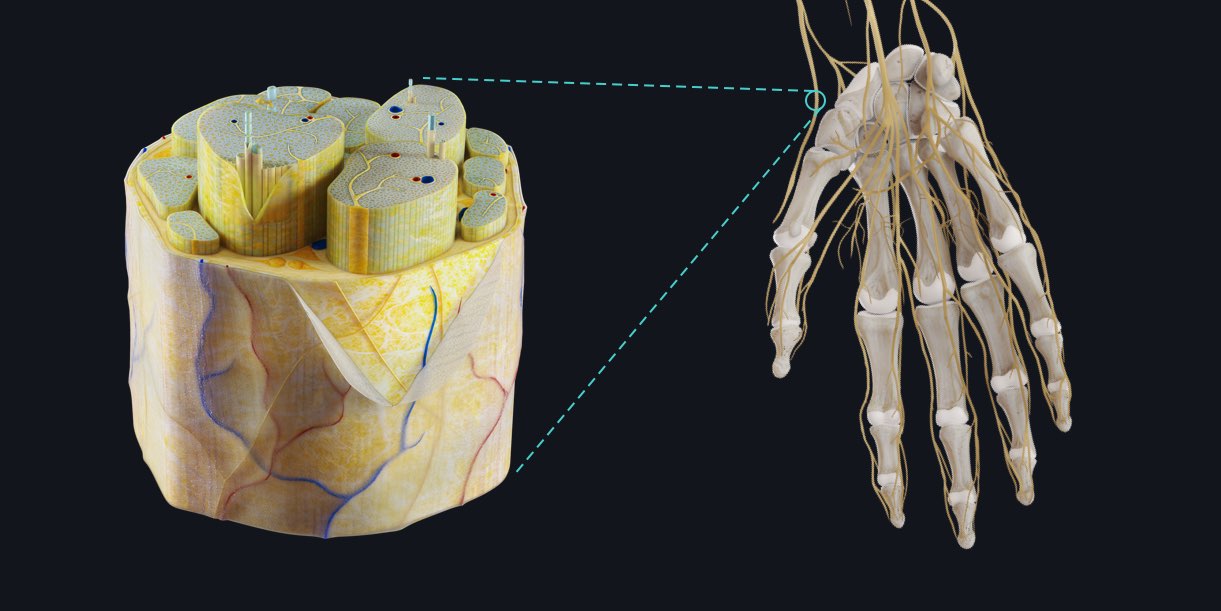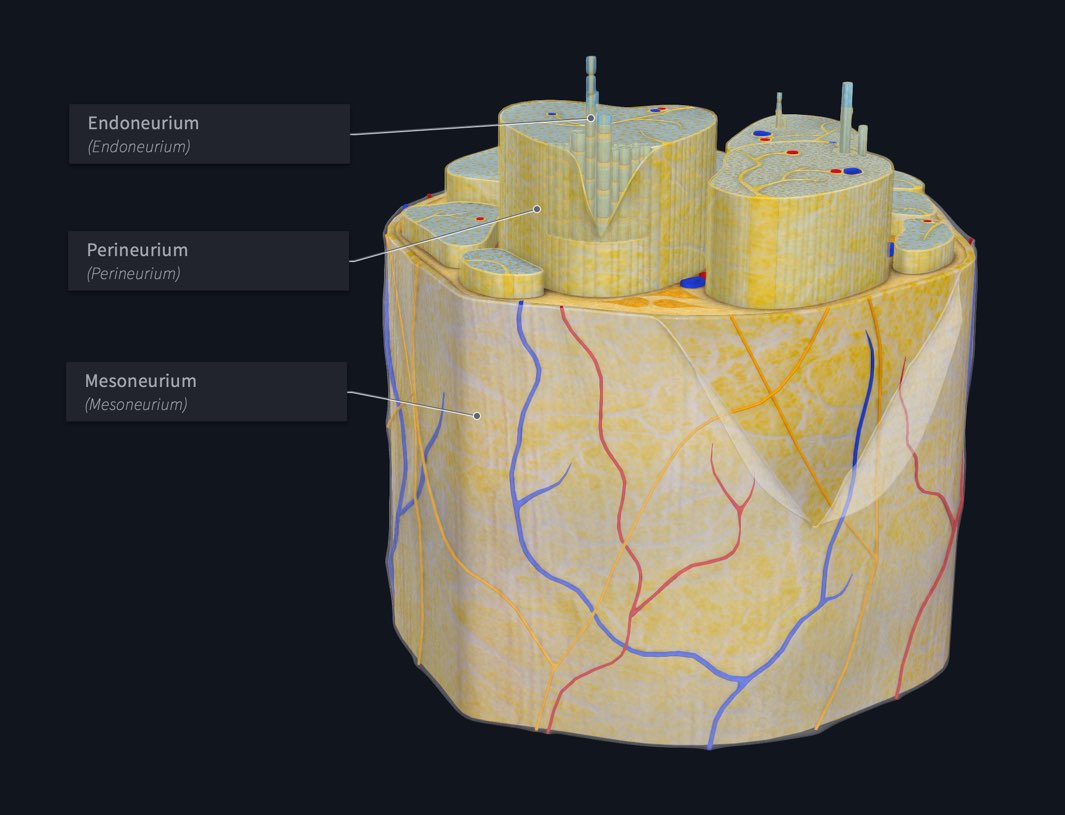
The peripheral nervous system (PNS) is one of two components which make up the nervous system of bilateral animals, with the other part being the central nervous system (CNS). The PNS consists of the nerves and ganglia outside the brain and spinal cord.
The main function of the PNS is to connect the CNS to the limbs and organs, essentially serving as a communication point between the brain, spinal cord and the rest of the body.
The peripheral nervous system is made up of three main types of nerves, each with its own specific function:
- Autonomic nerves help regulate the involuntary functions of the body, such as blood pressure ❤️, bladder function and perspiration.
- Motor nerves control the muscles of the body to aid movement ?♀️.
- Sensory nerves ⚡ pass sensations, such as cold ❄️, heat ? or pain ?, from the affected area of the body to the brain.

Peripheral neuropathy, often shortened to neuropathy, is a general term describing disease affecting the peripheral nerves. Damage to peripheral nerves may impair sensation, movement, gland or organ function, depending on which nerves are affected. This crafty mnemonic will help you recall the causes of peripheral neuropathy: TREADMILLS ?♂️?♀️
Toxins ☠️ (Ethanol, Heavy metals, Tetanus, Organophosphates, Diphtheria)
Renal Failure (Increased urea levels in the blood leads to neuropathy)
Endocrine (Diabetes, Hypothyroidism)
AIDS
Drugs/Deficiency ? (Amiodarone, Procainamide, Digoxin, Hydralazine, Statins, Isoniazid) / Vitamin B6 deficiency, Vitamin B12 deficiency
Malignancy (Carcinoma (paraneoplastic), Multiple myeloma, Lymphoma)
Inherited (Charcot-Marie-Tooth (CMT), Leukodystrophy)
Liver Disease
Lyme Disease
Syphilis
Now test yourself! ? ? Can you remember the causes of peripheral neuropathy?
Explore the anatomy in microscopic detail with an ever-growing suite of microanatomy models. Unlock ALL gross and microscopic anatomy models today with a FREE 3-day trial.